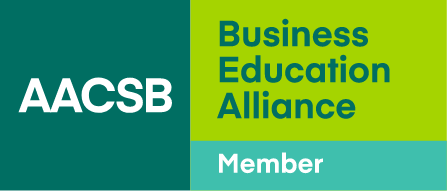2017 Fortune 500: More Female CEOs, Business School Educated
The recent release of the 2017 Fortune 500—an annual ranked list of the highest-revenue producing companies in the U.S.—has a notable distinction from past lists: a record-high number of female CEOs. While the number is still far from achieving anything close to gender equity or workforce representation—a mere 32 out of 500—the increase is more than 50 percent what it was last year. That statistic is significant, especially considering that the list has been around for more than 60 years.
Women, Business School, and the Workforce
One factor that distinguishes the 32 female CEOs of these Fortune 500 companies is that the majority of them—23—attended business school. Further, 20 of these highly successful women earned business degrees from AACSB-accredited business schools, and three received executive education (not resulting in a degree) from AACSB-accredited schools. Because initiatives to encourage and support female business students is a growing priority for business schools, chances are, we’ll see even more women leading the companies that make future Fortune 500 lists. Further, research shows that companies on the Fortune 500 list with a greater number of women board directors tend to perform better financially, according to recent Catalyst survey results. The outlook slants toward positive, but concerted efforts need to be consistently made by both business schools and business to continue the momentum in changing gender dynamics in top leadership positions across all industry sectors.
How Fortune 500 Companies Are Ranked
The Fortune 500 list is based on total revenues in a U.S. corporation’s fiscal year, ending on or before January 31. Figures are provided by a company in its published annual report and reviewed by employees of Fortune and third party affiliates. And while the companies themselves are what appear on the list, the CEOs are credited with the achievement and often spotlighted in the media. By nature of this methodology, the largest corporations are almost always the companies that will appear on the list. It should be noted that highest revenue is not equivalent with most successful, and that graduates of AACSB-accredited business schools globally enter a vast variety of business sectors—including nonprofits, small businesses, and government and non-governmental organizations—in which they, too, are highly successful. Further, many aspire to careers in social change, in which revenue is not the bottom line.
Fun Facts on the 2017 Fortune 500 Female CEOs
- More than 70 percent of women who run the 2017 Fortune 500 companies have received business education from AACSB-accredited schools
- 13 women executives on the list hold MBAs from AACSB-accredited business schools (and an additional one from a non-AACSB-accredited school)
- Stanford University Graduate School of Business is the most attended school by the 23 female CEOs on this year’s Fortune 500 list, with 5 attendees: Mary Barra of General Motors, ranked highest at No. 8, earned an MBA, as did Deanna Mulligan of Guardian Life Insurance; Patricia Poppe of CMS Energy earned an MS in management; and both Kim Lubel of CST Brands and Jacqueline Hinman of CH2M Hill completed the non-degree Stanford Executive Education Program
- Harvard University claims 3 CEOs on the list, with one possessing two degrees from the school: Marilyn Hewson of Lockheed Martin (executive development programs), Meg Whitman of Hewlett Packard (MBA), and Margo Georgiadis of Mattel (an AB—or Bachelor of Arts—from former women’s school Radcliffe College before it merged with Harvard University, and an MBA from Harvard Business School)
- The Wharton School at the University of Pennsylvania also has 3 listed executives as alumni: Safra Cats of Oracle (bachelor’s in economics), Phebe Novakovic of General Dynamics (MBA), and Tricia Griffith of Progressive (executive education Advanced Management Program)—who, notably, is the first female CEO of the insurance company
- 18 of the female executives attended business programs that are not one of the eight Ivy League schools, representing a broad diversity of institutions and quality business programs
- 6 women on the Fortune 500 list hold specialized master’s degrees in a business discipline
- 5 listed CEOs hold multiple business degrees, from bachelor’s to master’s to doctoral degrees.
The Future for Women in Corporate Leadership
With the call for business schools to encourage women into business programs and support them beyond graduation ringing louder than ever, we can be hopeful that with each new release of the Fortune 500 list, this year’s higher number of women CEOs will be less of a record and more of a trend. Aside from business schools implementing dedicated leadership programs focused on women’s success, outside organizations are stepping in. The Forté Foundation along with The Case for Women, as part of a push for improved gender dynamics at business schools, are championing awareness of the gender balance in case papers by encouraging schools to focus time and resources on evaluating their current gender inclusivity in core teaching materials. Another organization, the National Association of Women MBAs (NAWMBA), works to create mentor relationships between MBA graduates and female industry leaders so that newly minted MBAs in the workforce have the tools and support to help them find success in their career paths.
So while the higher number of women leading this year’s Fortune 500 companies is indeed an achievement, the work currently being done in business schools, industry, and dedicated organizations likely will continue to change the rather small statistic that made headlines this year.
Note: Educational information provided in this post was obtained from publicly available online biographical profiles posted on Forbes, Bloomberg, company websites, and school websites. One CEO on the list, Barbara Rentler, does not disclose educational information, so her background was not considered in the figures used.




